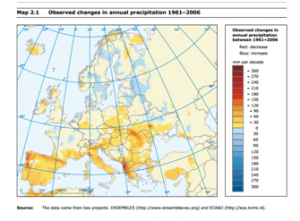Summer is coming. These days this sounds more like a threat than a promise, as it was actually in winter.
so, while you are sweatingly walking through the concrete jungle of your city, you catch yourself thinking “I wish I was in Lapland”… like really? You may change your mind with the following facts.
A pool party
Water scarcity is one of the direct consequences of climate change. And it does not forget about those little fellows up there- while probably all the rest of the world sometimes do forget in practice that they exist.
Scandinavian Countries recognised that they were hit by this phenomenon in 2006 ( White paper, Norden) and started to develop adaptive policies. They are particularly concerned with water issues. Is it a positive or negative question?
It has some feature of both abundance of water and of scarcity.
Scarcity is a minor factor, mostly concentrated in isolated spot areas beyond the arctic circle, that corresponds to melting glaciers that are obviously shrinking in dimensions more and more, as all of the other storages of water of snow are showing to do. The phenomenon is worsened by the trend of decreasing precipitations in those areas.
This overall trend enacts also a runoff flow of water to southern regions, that causes in situ the opposite phenomenon.
Abundance of water derives from not only melting glaciers, which create a considerable flow of it towards other regions, but it is also due to increased precipitations in the southern part of Scandinavia: the average in Europe is of an increase of 6-8% over the period 1901-2005 (EEA, 2009), and this is the evidence undertaken in this location.

So what?
What is particularly striking about this phenomenon is that is actually not very democratic.
The water issue has as drawbacks to the region the loss of water storages (in the form of ice and snow), a massive inflow of bad quality water to North southern regions, increased moisture in urban areas ( concentrated in the southern part of the Scandinavian countries) and an increased probability of extreme meteorological events.
However it has awkward and significant positive economic sides, such as increased potentiality of Hydroelectric power, due to the flow, opportunities in water- export due to external heavier water scarcity conditions, and recoverings on the quality of water due to oxygen-rich rains. Not to forget that one of the side effects of climate change is that it creates an increase in the yields of horticultural crops in those region who were historically poor of it (Scandinavian countries, in fact).
Contextualising
Now: you may still want to go to Lapland, but maybe for other –fruitful– reasons.
However, results like those reported are forecasts inserted in a context of risk and uncertainty.
In fact Scandinavian countries are only marginally affected by climate change and water issues, in particular with respect to developing and middle east countries.

“Climate Change Impacts and Limited Market-driven Adaptation”
by Francesco Bosello and Ramiro Parrado
Still, we can notice very much discrimination in such phenomenon, isn’t it?



